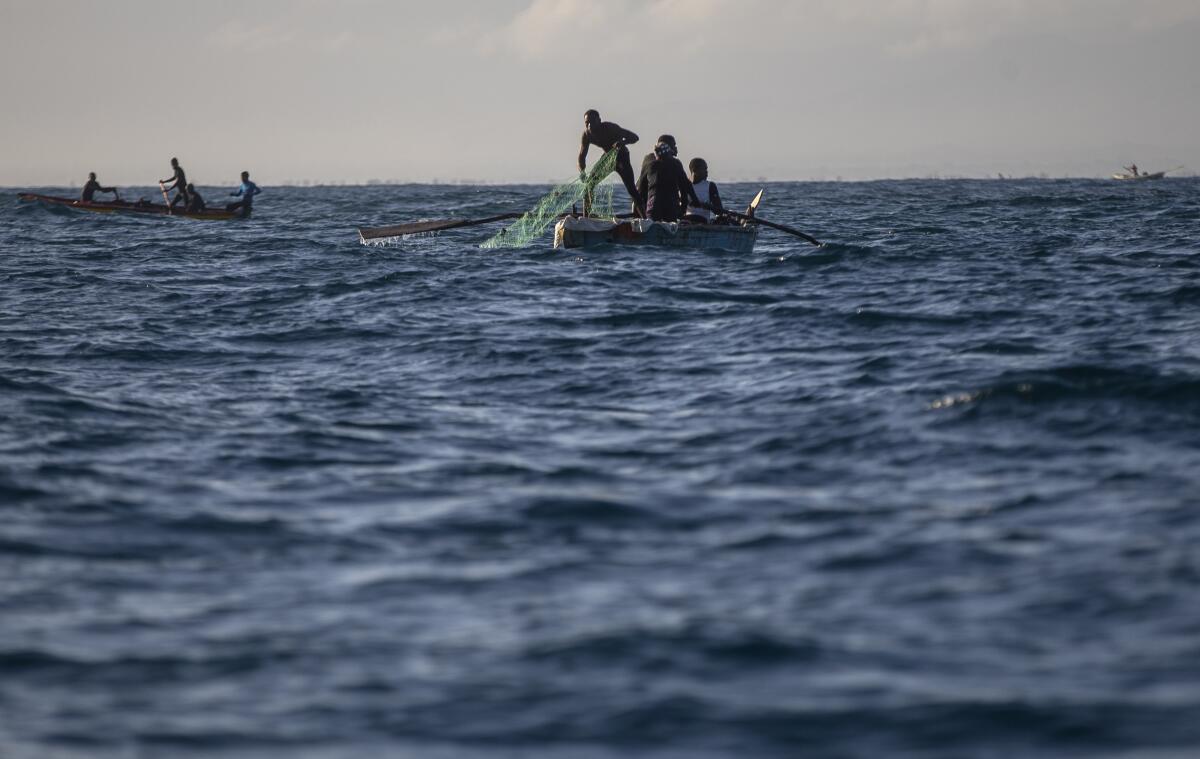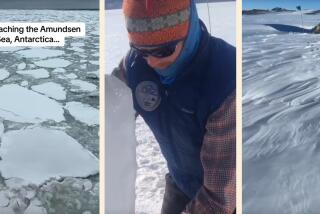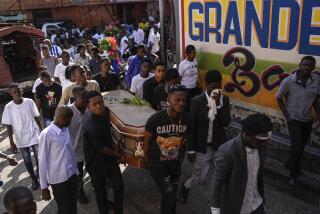Researching climate change in Haiti, a biologist faces an all-too-human conflict

- Share via
PEPILLO SALCEDO, Dominican Republic — In a blue bay that spans the border of Haiti and the Dominican Republic, fishermen from both countries recently aired grievances in a rare face-to-face meeting thanks to the efforts of marine biologist Jean Wiener.
The meeting, overseen by Dominican naval officers with rifles, was no small feat for Wiener, who has been forced to work on conserving this biologically sensitive region from afar — his house in Bethesda, Md. — because of rampant violence in Haiti, his homeland. Now the prize-winning biologist stood in the Caribbean heat at the mouth of a spot called the Massacre River, trying to bring together the two sides and find a solution that will not only save their livelihoods but also vital marine resources in a region under extreme pressures from climate change.
“The constant fishing, or overfishing, in these areas has decimated an entire ecosystem,” said Rodolfo Jimenez, director of an agricultural border project in the Dominican Republic.
The Haitian fishermen, standing across from Jimenez on the beach, agreed. But they also said they were not to blame for the damage in the Monte Cristi National Park in northwestern Dominican Republic.
Wiener’s work has grown in significance over the years in large part because of charcoal vendors in Haiti who hack down trees for cooking fuel and, more recently, wade into the country’s mangroves, the tropical vegetation that is a natural barrier against the Caribbean’s destructive hurricanes.
It was the first trip for Wiener, leader of Foundation for the Protection of Marine Biodiversity, since November 2021, his absence largely attributed to the violent gangs that have engulfed the Haitian capital in recent years. Nominally present already and undermined further with the 2021 assassination of President Jovenel Moise, the government has done little to wrest control from the gangs.
For years, Wiener used to visit Haiti every month or so, but now restricts his trips to only a few times a year while being compelled to work remotely and delegate more responsibility to staff members dispersed throughout the country. Haiti is just too dangerous otherwise. So when he does come, as he did for three weeks in March, he hopscotches the country via puddle-jumper plane; travel by road is too perilous.
It’s a conundrum that bedevils Jean and others like him around the world. As climate change plays a greater role in contributing to conflicts, that in turns makes it more difficult to carry out scientific research and work on environmental projects that seek to offset the effects of climate change. The environmental group Global Witness released a report last year noting that 2020 saw a record number of environmental activists killed around the world; the death toll of 227 was the highest number recorded for a second consecutive year, with Colombia having the highest number of recorded attacks, with 65, and Mexico second, with 30.
“The extent to which failed states make it difficult for scientists and the international scientific community to work on these issues simply means it will be more difficult to solve these problems,” said Peter Gleick, president emeritus and a senior fellow with the Pacific Institute, an Oakland-based research group that focuses on water issues.
In several reports released in October, the U.S. signaled that climate change would occupy a central role in security strategy, a policy shift that underscores how climatic changes are exacerbating long-standing problems. One of the studies identified 11 countries that were of “greatest concern,” because they were especially vulnerable to climate change and unable to deal with the attendant problems. Haiti was among them.
The Caribbean nation has the highest travel advisory from the U.S. State Department due to kidnapping, crime and civil unrest. Kidnapping, the State Department says, “is widespread and victims regularly include U.S. citizens.”
The kidnappings have persisted for years, rising significantly after the 2017 departure of a U.N. peacekeeping mission. In October, a group of missionaries was abducted by a powerful gang and held for ransom.
The March meeting took place at the mouth of a river with a name that harks back to a bloody episode on the island of Hispaniola: The Massacre River, also the Dajabón River. Though named for an earlier massacre, it’s mostly known for when Dominican soldiers in 1937 executed thousands of Haitian families and Dominicans of Haitian descent.
The antipathy toward Haitians persists today, not least with Dominican President Luis Abinader’s newly launched plan to build a multimillion-dollar, 118-mile wall along the border.
In the end, the March trip to Haiti proved fortuitously uneventful — though danger wasn’t far away.
When Wiener visited the southwestern part of the country, his driver got wind of protesters’ plans to storm the local airport. The attack didn’t happen until after Wiener flew out, a few days later: People ran onto the tarmac and torched a small plane.
One day during his recent visit to northern Haiti, Wiener gave a snorkeling lesson. While the group waded in the surf, a pufferfish floated toward them.
Wiener gently picked up the prickly fish with both hands, walked a few steps out and sent the pufferfish into the ocean.
“We really know that there’s a part, you know, where you can be in a classroom,” Wiener said later from the hotel, where a few security guards patrolled the grounds. “But it is critically important that people actually get out and touch and see and feel the environment.”
More to Read
Sign up for Essential California
The most important California stories and recommendations in your inbox every morning.
You may occasionally receive promotional content from the Los Angeles Times.










